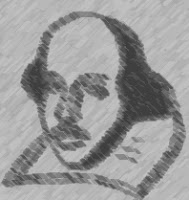Originality , Technique , Tradition , Convention , Dramatic Elements and Style of Shakespearean Sonnets
Exploring the Essence of Shakespearean Sonnets: Unveiling Originality, Technique, Tradition, Convention, Dramatic Elements, and Style
Shakespearean Sonnets: Redefining Tradition and Embracing Unconventional Originality
The Evolution and Artistry of Shakespearean Sonnets: Technical Complexity, Varied Structures, and Unique Expressions
Shakespearean Sonnets: Subverting Conventions and Embracing Controversial Love
Unveiling Shakespearean Sonnets: Love, Ambiguity, and Societal Reflections
Dramatic Personae and Intriguing Plot: Unveiling the Unique Dynamics of Shakespeare's Sonnets
Conclusion
Shakespeare’s dramatic art. : History and character of Shakespeare’s plays : Ulrici, Hermann, 1806-1884 : Free Download, Borrow, and Streaming : Internet Archive. (n.d.). Internet Archive. https://archive.org/details/shakespearesdram01ulri
William Shakespeare : the poems : Prince, F. T. (Frank Templeton), 1912- : Free Download, Borrow, and Streaming : Internet Archive. (n.d.). Internet Archive. https://archive.org/details/williamshakespea0000prin
Full text of “Shakespeare And His Critics.” (n.d.). Full Text of “Shakespeare and His Critics.” https://archive.org/stream/shakespeareandhi030042mbp/shakespeareandhi030042mbp_djvu.txt
Themes and variations in Shakespeare’s sonnets : Leishman, J. B. (James Blair), 1902-1963 : Free Download, Borrow, and Streaming : Internet Archive. (n.d.). Internet Archive. https://archive.org/details/themesvariations0000leis
Shakespeare’s living art : Colie, Rosalie Littell : Free Download, Borrow, and Streaming : Internet Archive. (n.d.). Internet Archive. https://archive.org/details/shakespeareslivi0000coli
Shakespeare’s Sonnets : Shakespeare, William, 1564-1616 : Free Download, Borrow, and Streaming : Internet Archive. (n.d.). Internet Archive. https://archive.org/details/Shakespearessonn01shak_201303


Comments
Post a Comment
Drop any query, suggestion or comment here.